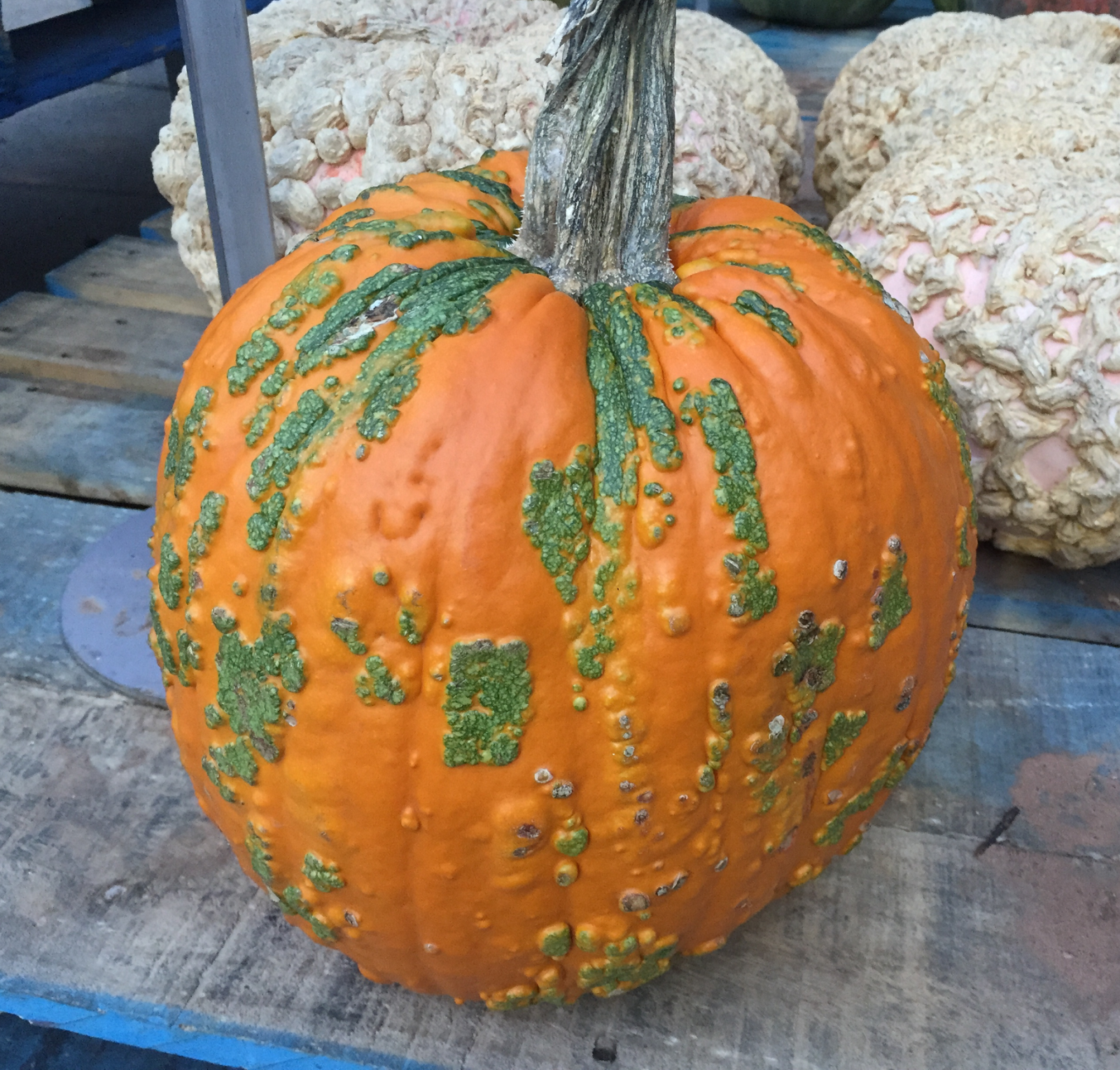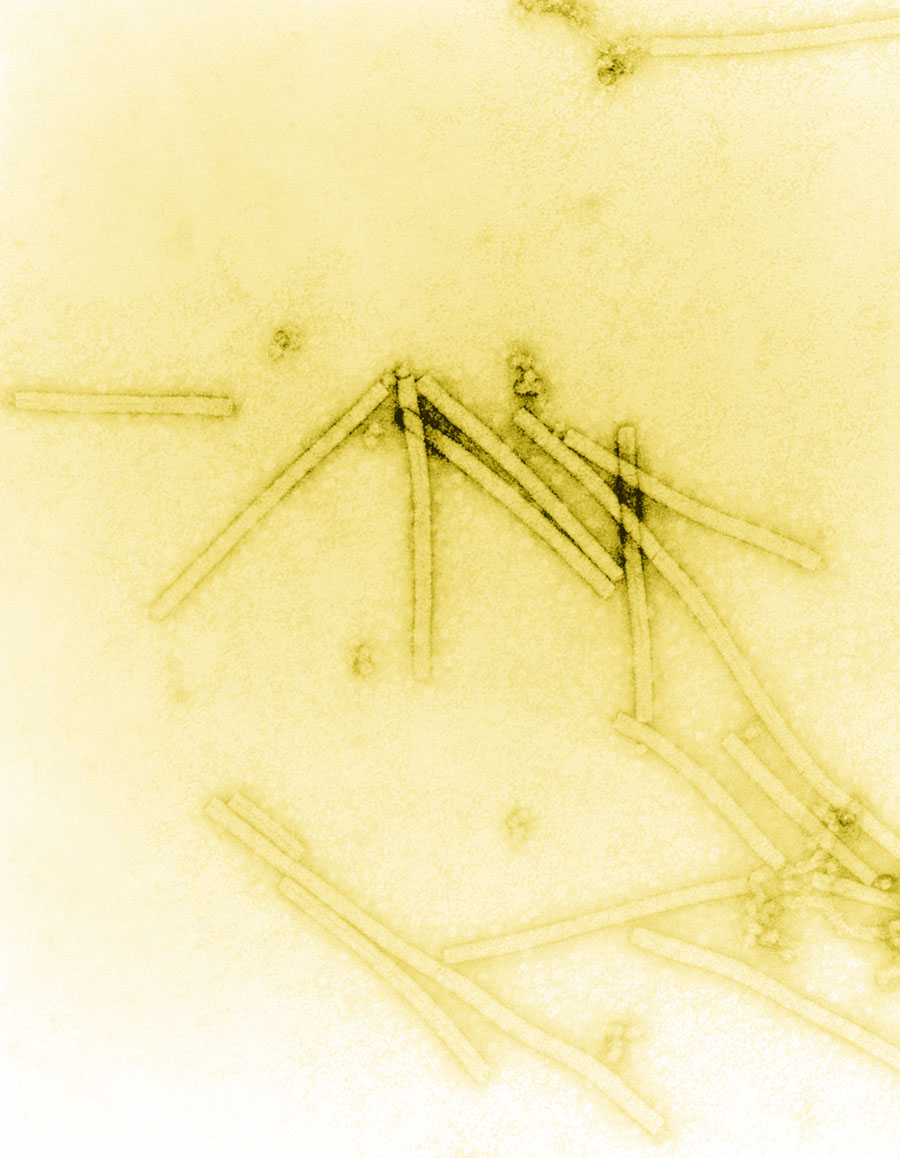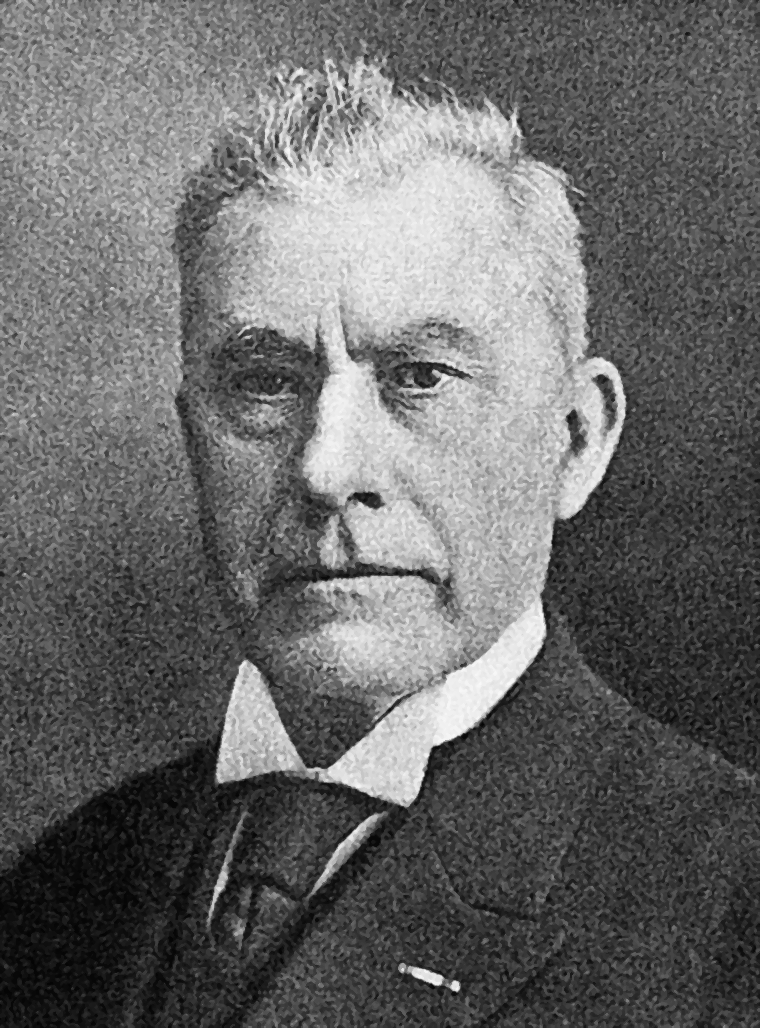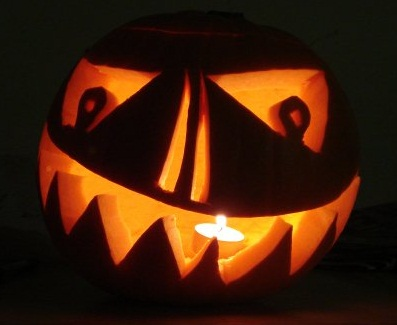Pumpkin Viruses
Today, viruses make warts and horns. The University of Houston's college of engineering presents this series about the machines that make our civilization run, and the people whose ingenuity created them.
Some Halloween pumpkins are covered with ugly warts. This is great for scary Jack-o'-lanterns, but how did they get that way? Some of them were bred that way. But some of them are infected, with squash mosaic virus.

Warty Pumpkin
Viruses are much smaller than bacteria. They're very simple, really just packaged genes. They can't reproduce by themselves. Instead their genes hijack a host cell and force it to make more virus. This is why viruses are harder to cure than bacteria, which have their own unique functions. For example, we don't have hard walls around our cells, but bacteria do. Penicillin, which blocks cell wall synthesis, kills bacteria and leaves human cells alone. It's much harder to find a good target in a virus.
Many viruses reproduce in huge numbers in the host cell, but some have another way to get copied. They make the host cell divide, copying the virus as it goes. These growing host cells can form lumps, like the ones on warty pumpkins.
A plant virus gave us the very idea of a virus. Around 1880 Dutch tobacco plants were stunted and their leaves covered with a mosaic of live and dead areas. People looked for fungus and parasites and didn't find any, but did find that sap from sick plants could infect healthy plants. Early microscopes could see bacteria, and people knew of diseases caused by bacteria, so they looked for those. Bacteria grew from the sick plants, but they didn't trigger tobacco mosaic disease. It remained a mystery.

Tobacco Mosaic Virus
Photo Credit: Wikipedia
Technology provided the answer. Louis Pasteur's assistant Charles Chamberland invented a filter that could retain bacteria. It was meant to make sterile water for Pasteur's experiments, but was widely used for drinking water before chlorination. The Dutchman Martinus Beijerink filtered all the bacteria out of fluid from diseased tobacco plants and found it still could transmit the infection! A mysterious something much smaller than bacteria could transmit the disease. Beijerink called it a "contagious living fluid" or "virus". Now electron microscopes let us see viruses, including mosaic virus that can turn a smooth pumpkin into a lumpy one.

Martinus Willem Beijerinck
Photo Credit: Wikipedia
Humans and animals can get lumps from viruses, too. The papilloma virus causes warts, and cervical cancer. Growing up in Colorado, we had the legendary jackrabbit/antelope hybrid called a jackalope. We thought they were fake, and most were. But papilloma viruses also can make little bumpy horns appear on rabbits, and so the jackalope, like warty pumpkins, has its origins in powerful agents too small to see.
.png)
Papilloma Virus (HPV)
Photo Credit: Wikipedia
I'm Richard Willson, at the University of Houston, where we're interested in the way inventive minds work.

Jack-'o-lantern
Photo Credit: Wikipedia
Review of the first 100 years of Virology: https://www.ncbi.nlm.nih.gov/pmc/articles/PMC241285/pdf/jvirol00040-0015.pdf
Causes of bumpy pumpkins: https://www.gardeningknowhow.com/edible/vegetables/pumpkin/bumpy-pumpkin-fruit.htm
Tobacco mosaic virus: https://en.wikipedia.org/wiki/Tobacco_mosaic_virus
Mosaic viruses: https://www.almanac.com/pest/mosaic-viruses
The Chamberland-Pasteur filter: https://www.sciencehistory.org/distillations/magazine/the-filter-of-life
Warts caused by human papilloma virus: https://www.webmd.com/skin-problems-and-treatments/features/viruses-cause-skin-warts#1
The Jackalope: https://www.legendsofamerica.com/wy-jackalope/
Nobel Prize biography of Rous, who investigated papillomavirus as a cause of tumors: https://www.nobelprize.org/prizes/medicine/1966/rous/biographical/
HPV and cervical cancer: https://www.who.int/news-room/fact-sheets/detail/human-papillomavirus-(hpv)-and-cervical-cancer
zur Hausen Nobel Prize press release on HPV as cause of cervical cancer: https://www.nobelprize.org/prizes/medicine/2008/press-release/
Cervical Cancer: https://en.wikipedia.org/wiki/Cervical_cancer
Decline in cervical precancers with HPV vaccination: https://www.cancer.org/latest-news/cervical-precancers-drop-since-introduction-of-hpv-vaccine.html
This episode was first aired on October 29, 2019